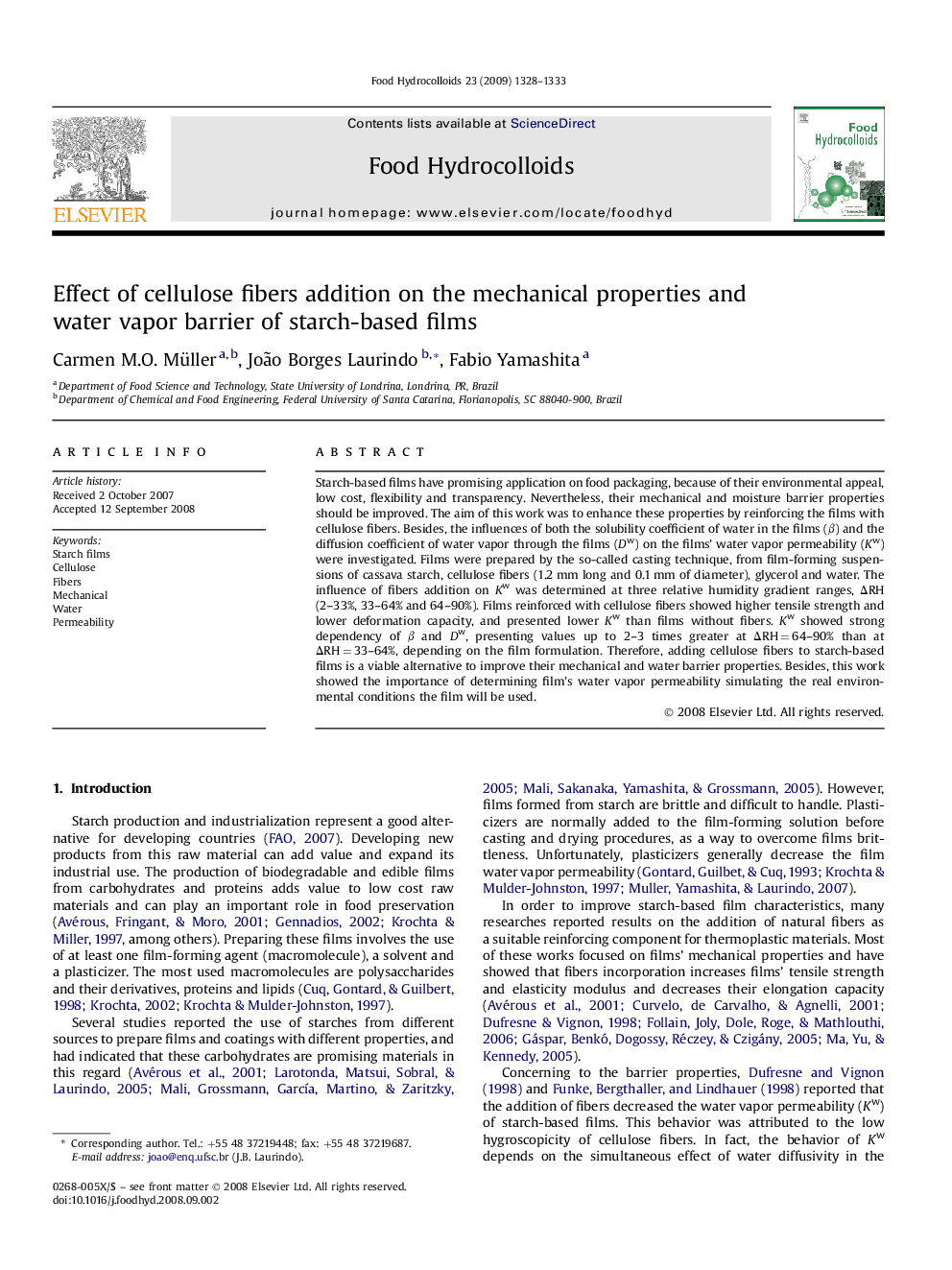| Article ID | Journal | Published Year | Pages | File Type |
|---|---|---|---|---|
| 605870 | Food Hydrocolloids | 2009 | 6 Pages |
Starch-based films have promising application on food packaging, because of their environmental appeal, low cost, flexibility and transparency. Nevertheless, their mechanical and moisture barrier properties should be improved. The aim of this work was to enhance these properties by reinforcing the films with cellulose fibers. Besides, the influences of both the solubility coefficient of water in the films (β) and the diffusion coefficient of water vapor through the films (Dw) on the films' water vapor permeability (Kw) were investigated. Films were prepared by the so-called casting technique, from film-forming suspensions of cassava starch, cellulose fibers (1.2 mm long and 0.1 mm of diameter), glycerol and water. The influence of fibers addition on Kw was determined at three relative humidity gradient ranges, ΔRH (2–33%, 33–64% and 64–90%). Films reinforced with cellulose fibers showed higher tensile strength and lower deformation capacity, and presented lower Kw than films without fibers. Kw showed strong dependency of β and Dw, presenting values up to 2–3 times greater at ΔRH = 64–90% than at ΔRH = 33–64%, depending on the film formulation. Therefore, adding cellulose fibers to starch-based films is a viable alternative to improve their mechanical and water barrier properties. Besides, this work showed the importance of determining film's water vapor permeability simulating the real environmental conditions the film will be used.
